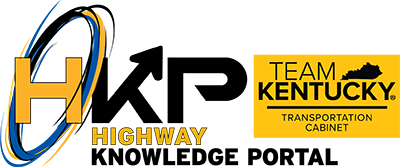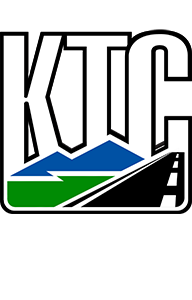Search for articles or browse our knowledge portal by topic.
Traffic Signals Overview
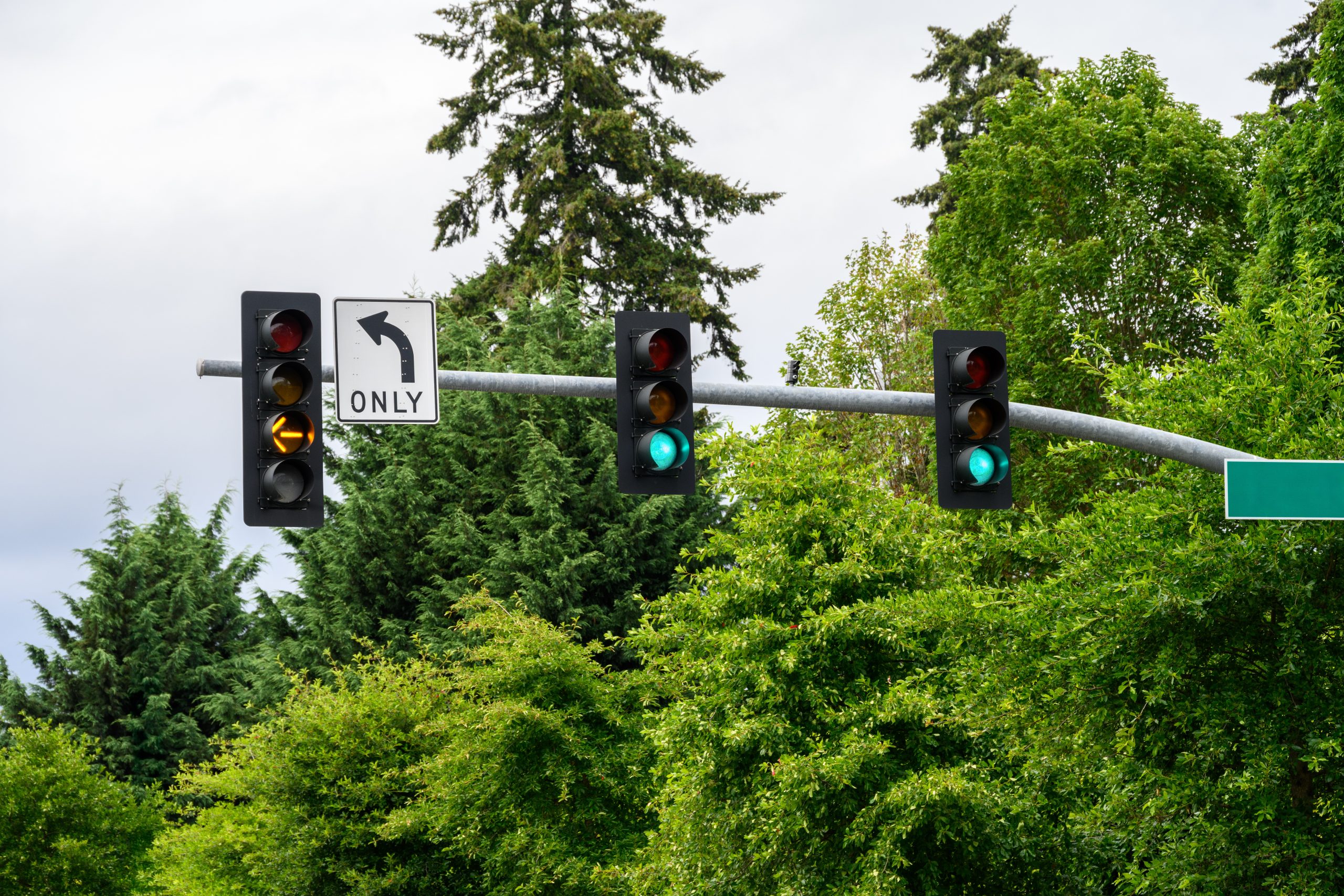
The full definitions for terms included in this article (listed below) can be found in the HKP Glossary.
-
Engineering Study
- MUTCD
- Signal Coordination
- TOGM
- Traffic Impact Study (TIS)
- Traffic Signal
- Traffic Signal Warrant
Traffic signals are electronically operated traffic control devices that direct motorists when to stop, go, and use caution at an intersection by assigning right of way to each approach and movement. They are usually installed where other types of traffic control would expose road users to excessive delays and/or hazards.
Traffic signals are one of the many tools a traffic engineer can use to manage traffic flows at an intersection. However, traffic signals cannot solve all traffic problems, and their use may involve tradeoffs between safety and mobility. Signalized intersections represent about one–third of all intersection fatalities, including a large proportion that involve red–light running.
Traffic signals are most effective at intersections where conflicting vehicle movements meet specified volume thresholds. These volume thresholds and other pertinent factors are outlined in the Traffic Signal Warrants found in Chapter 4C of the MUTCD. In cases where one roadway has a much higher traffic volume than a side street, installing a signal may make it easier for side street traffic to traverse an intersection. However, effective operation of a signalized intersection requires drivers on the higher-volume roadway to readily identify and comply with red signal indications. When side street traffic is too low to trigger regular changes in signal phase, mainline drivers may get accustomed to seeing a green light and begin to disregard a signal altogether. Disregarding signals can result in motorists running red lights, right-angle crashes, and/or rear-end crashes along the mainline.
A 2008 research study by KTC examined the crash history at intersections before and after installation of a traffic signal. The research showed that signals installed based on signal warrants from an engineering study resulted in a decrease in angle collisions with an increase in the less severe rear end collisions. At intersections where signal warrants were not met, there was a smaller decrease in angle collisions and a larger increase in rear end collisions. The removal of unwarranted traffic signals did not result in a crash problem. The analysis showed that the signal warrants provided in the MUTCD should be followed as part of an engineering study when determining the need for a traffic signal installation.
Table 1 summarizes the potential advantages and disadvantages of signals that are appropriately justified, designed, installed, and maintained.
| Table 1: Potential Advantages and Disadvantage of Traffic Signals | ||
| Advantages | Disadvantages | |
| Enable orderly traffic movement, including pedestrians and bicyclists | May cause excessive delays, especially on mainline approaches | |
| Increase the traffic-handling capacity of intersections | May cause excessive disobedience of signal indications | |
| Reduce the frequency and severity of some crash types (e.g., right-angle, left-turn collisions, collisions involving vulnerable road users) | Increase the use of less adequate routes as road users attempt to avoid traffic signals | |
| With signal coordination, provide for more continuous movement of traffic along a corridor | Significant increase in the frequency of some crash types (e.g., rear-end collisions) | |
| Interrupt heavy traffic at intervals to permit vehicular or pedestrian traffic to cross | ||
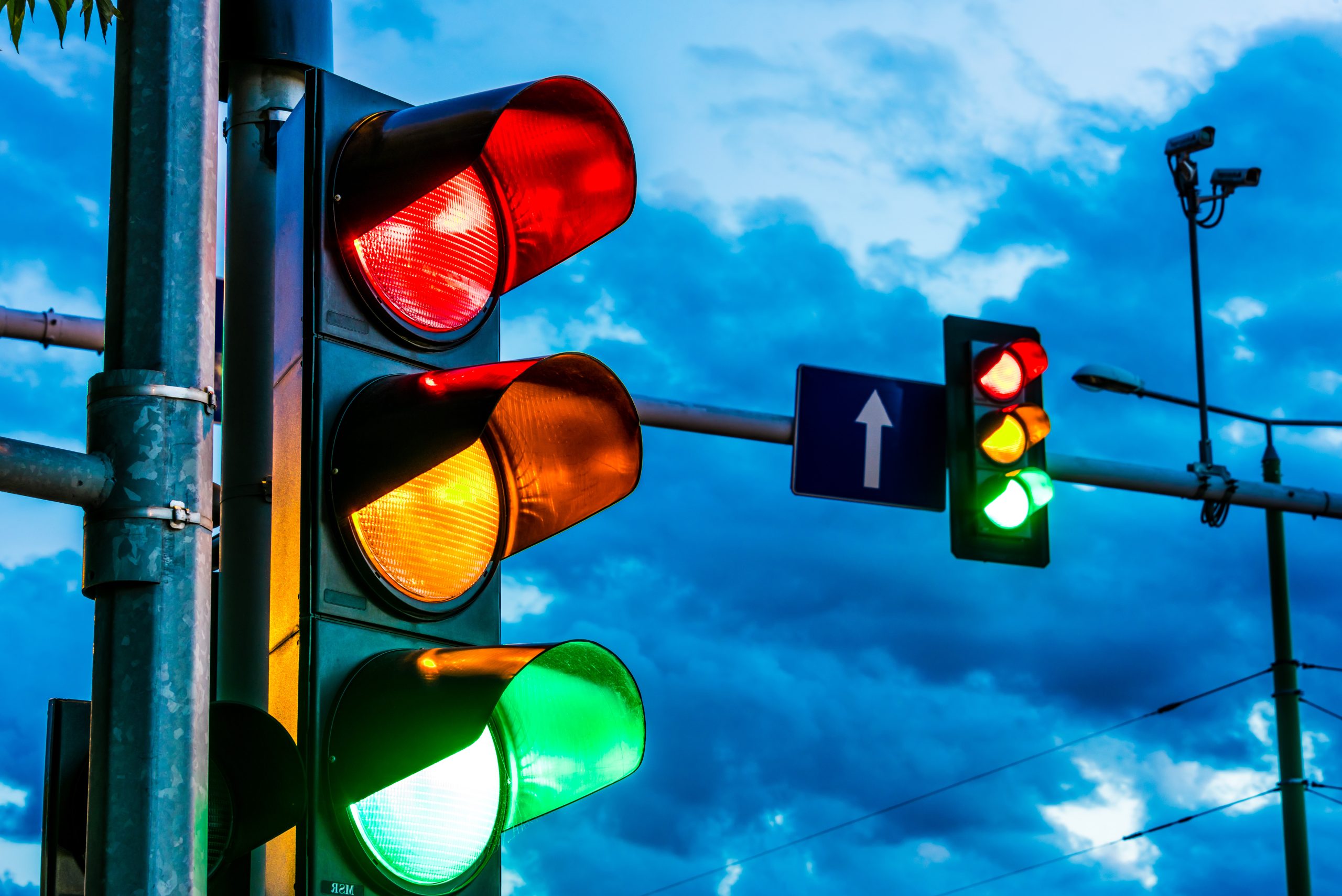
Figure 1: Example of a Traffic Signal
Because traffic signals must command the attention and compliance of different road users (e.g., motorists, bicyclists, pedestrians) over a wide range of conditions, adopting standardized and uniform procedures to install and operate signals is critical. While uniformity helps road users recognize and interpret signals, standardization promotes uniformity and fosters efficiencies in the design, installation, maintenance, and operation of signals (e.g., simplified procurement of materials and services).
The Cabinet uses two primary resources to promote signal standardization and uniformity: (1) the Federal Highway Administration’s Manual on Uniform Traffic Control Devices (MUTCD) and (2) KYTC’s Traffic Operations Guidance Manual (TOGM).
4.1 MUTCD
Kentucky state law (KRS 189.337 and 603 KAR 5:050) establishes the MUTCD as the standard for all traffic control devices installed on any street, highway, bicycle trail, or private road open to public travel. The MUTCD specifies minimum requirements for traffic control devices. Staff who participate in the review, installation, and/or operation of traffic signals must be familiar with the MUTCD.
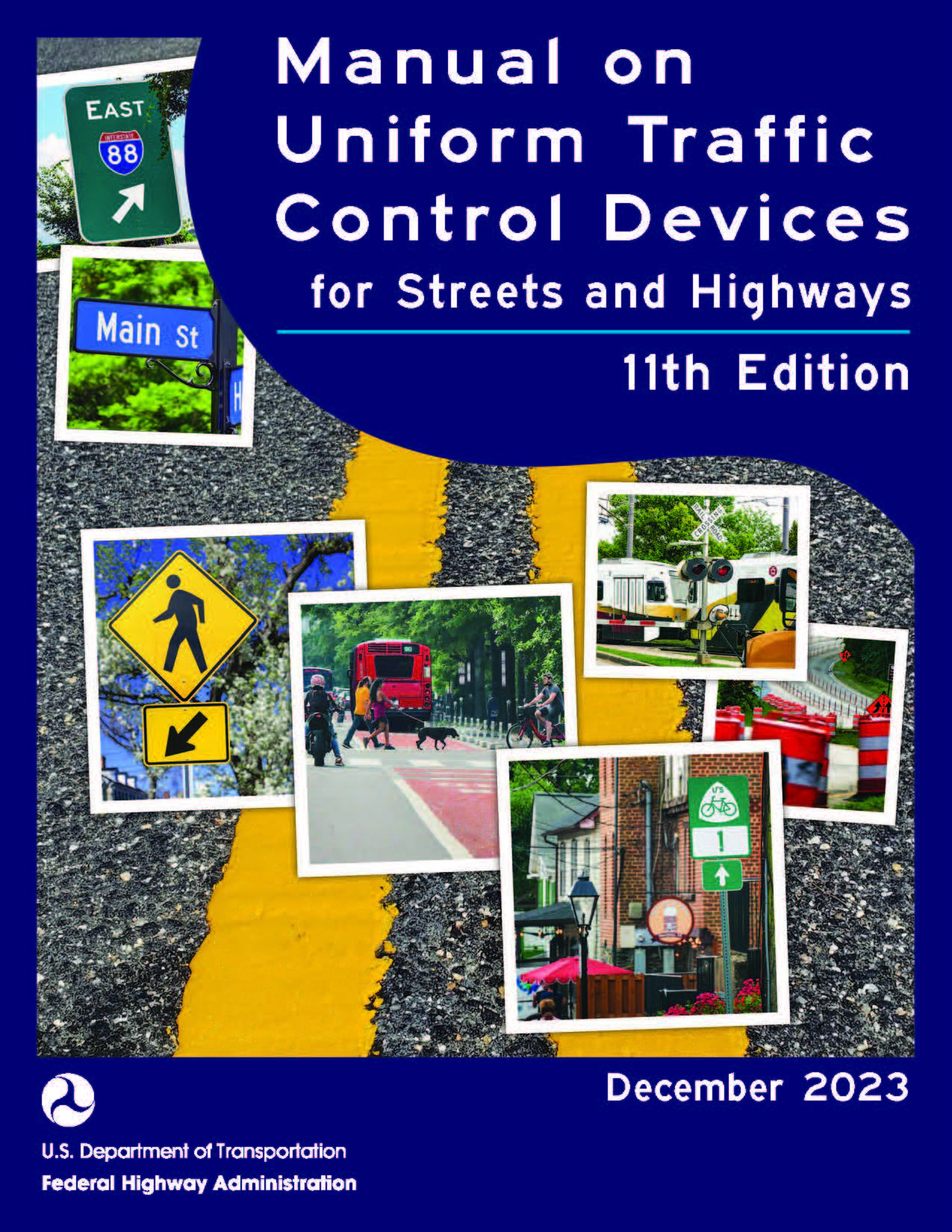
Figure 2: Cover Photo of the MUTCD, 11th Edition
The MUTCD is divided into nine Parts, each focusing on a specific category of traffic control devices. The Parts are further broken down into Chapters and Sections. Part 4 focuses on traffic signals and other electrical traffic control devices.
4.2 Traffic Operations Guidance Manual
While the MUTCD establishes minimum requirements for traffic control devices, the KYTC Traffic Operations Guidance Manual (TOGM) provides additional details for traffic control devices on state-maintained highways. TO-600 addresses electrical traffic control devices, with most of the chapter devoted to traffic signals.
5.1 Traffic Signal Requests
KYTC considers traffic signal requests from any source. However, most signal requests originate from one of the following:
- an individual citizen or a group of citizens,
- an elected official,
- a KYTC project development team, or
- a private developer in the form of an encroachment permit.
In all cases, the initial review of a signal request should start in the District. If a signal request originates from the public or an elected official, the District Traffic staff reviews the request and collects data as needed to conduct an engineering study (see Section 5.2). If the signal request originates from a KYTC project development team, the project manager submits a formal request along with projected traffic volume information to District Traffic staff for further evaluation. If the signal request originates from a Developer in the form of an encroachment permit, the District Permit’s Engineer submits the request to District Traffic staff accompanied by a Traffic Impact Study conducted by a traffic engineering consultant that is prequalified by KYTC to provide traffic engineering services.
5.2 Engineering Study
MUTCD Section 4C.01 outlines the provisions for an engineering study to determine if a traffic signal should be installed. The MUTCD states that an engineering study must be:
- A comprehensive analysis and evaluation of available pertinent information,
- Performed by an engineer or under the supervision of an engineer, and
- Documented
The most critical aspect of the engineering study is comparing traffic volumes at an intersection to MUTCD traffic signal warrants. Other items commonly evaluated as part of an engineering study include:
- Traffic forecasts (for proposed signals on projects and encroachment permits),
- Turning movement counts,
- Intersection geometry,
- Number and types of crashes recorded, and
- Alternatives to a signal that may provide for safer or more efficient traffic movement
Specific information on traffic signal engineering studies can be found in MUTCD Chapter 4C and TO-603.
5.3 Traffic Signal Approval Process and Appeals
The approval process begins with District Traffic staff using available information to make an initial determination on whether a signal is needed. Occasionally, District staff use engineering judgment to deny a signal request without committing additional resources for a formal engineering study or they make their decision based on knowledge of the location and/or earlier studies. If District Traffic staff believe signalization may be warranted, an engineering study should be conducted.
If an engineering study supports signal installation, District Traffic staff submits their recommendation and supporting documentation to their Division of Traffic Operations liaison in the Traffic Engineering Branch for a joint review of the request. KYTC typically views a traffic signal as justified when all the following conditions are satisfied:
- One or more traffic signal warrants are met,
- An engineering study indicates that installing a traffic signal would improve an intersection’s overall safety and/or operation,
- Other alternatives have not been, or are unlikely to be, effective or are not feasible, and
- A traffic signal would not seriously disrupt progressive traffic flow
It is important to note that the installation of a traffic control signal does not necessarily result in improved safety in every situation. It should also be noted that the satisfaction of a traffic signal warrant does not in itself require the installation of a traffic signal. Conversely, in rare situations, a traffic signal might be installed at a location where no signal warrants are satisfied. The safe and efficient movement of all road users is the primary consideration in the engineering study to determine whether to install a traffic signal or some other type of traffic control or roadway configuration. The engineering study is critical to ensure the evaluation of all relevant factors and to document the rationale for deciding whether the installation of a traffic signal is or is not the best solution for improving the overall safety and/or operation at a location.
Before submitting a formal approval request, District Traffic staff should inform local government officials that a signal installation is under consideration for approval. While local concurrence is not a prerequisite for installing a traffic signal, local officials should be aware of potential installations in their area, especially if the local government will be responsible for utility charges.
If both District Traffic staff and their liaison agree that a signal is justified, Division staff forward the request to the Deputy State Highway Engineer (DSHE) for Project Delivery and Preservation (PD&P), who is authorized to approve traffic signals.
Figure 3 summarizes the traffic signal approval process. TO-603 includes more details on the approval process for signals associated with existing intersections and roadway projects, while TO-605 provides details on the approval process for signals associated with encroachment permits.
Figure 3: Traffic Signal Approval Process
Denied traffic signal requests may be appealed. An appeal is submitted to the next level in the decision chain of command. If a District denies a request, it is appealed to the Division. And if the Division denies a request, the next level of appeal is the DSHE for PD&P.
The first step District Traffic staff should take when evaluating whether a traffic signal is justified is to analyze existing adverse condition(s) the proposed signal is intended to improve. These most often can be categorized as: 1) capacity deficiencies, particularly those which cause excessive side street delays; and/or 2) safety deficiencies, often related to poor sight distances or high mainline speeds. Consider all reasonable alternatives before recommending a traffic signal.
The list of alternatives below is not comprehensive, but it captures many of the most common approaches currently used by KYTC. It is advisable for traffic engineers to consider all reasonable alternatives to effectively improve capacity and/or safety before recommending a traffic signal.
Alternatives to traffic signals that address capacity deficiencies:
-
- Add or extend auxiliary turning lanes
- Channelize right-turn movements
- Revise geometrics to install acceleration or deceleration lanes
- Provide additional through lanes to reduce the number of vehicles per lane
- Provide multiple access points for commercial developments
- Construct an alternative intersection design that reduces conflict points, such as a restricted crossing U-turn (RCUT) intersection or roundabout
- Provide access to an existing signalized intersection through frontage/backage road
Alternatives to traffic signals that address safety deficiencies:
-
- Install advance warning signs on the minor and/or major approaches warning motorists of a downstream intersection
- Improve sight distance by relocating stop bars, removing vegetation, relocating/removing obstructions, or other measures
- Reduce speed limits, if warranted
- Install multi-way stop control, if warranted
- Use flashing beacons or LED-enhancement on advance warning signs and/or STOP signs for a minor street if side-street traffic appears to have difficulty stopping
- Use flashing beacons or LED-enhancement on advance warning signs for major street approaches if mainline traffic appears unaware of possible conflicts
- Install transverse rumble strips on STOP-controlled approaches if traffic appears to have difficulty stopping
- Install rectangular rapid flashing beacons (RRFBs), pedestrian-actuated warning beacons, or a pedestrian hybrid beacon (PHB) if pedestrian safety is a major concern
- Install an intersection control beacon
- Install or improve roadway lighting if many crashes occur at night
- Restrict problematic turning movements, perhaps on a time-of-day basis, if alternative routes are available
- Install an intersection conflict warning system (ICWS) at intersections where side-street traffic appears to have difficulty judging adequate gaps in mainline traffic
- Revise geometrics to install median refuge islands and/or curb extensions to address pedestrian concerns
- Revise geometrics to provide acceleration or deceleration lanes
- Construct an alternative intersection type, such as an RCUT intersection or roundabout
- Provide access to an existing signalized intersection through a frontage/backage road
- Coordinate adjacent signals to provide gaps in mainline traffic
Since traffic patterns change over time, retaining signal installations that are no longer justified based on current conditions can degrade safety and mobility. When District Traffic staff believe an intersection no longer meets warrants for a traffic signal, an engineering study should be conducted to determine whether the signal should be removed. The KYTC approval process for removing a traffic signal follows the same steps as those required for a new installation.
Section 4B.05 of the MUTCD outlines steps to take if an engineering study indicates a signal is no longer justified and KYTC has decided to remove it:
- Determine the appropriate traffic control to be used after the signal is removed
- Remove sight-distance restrictions, as necessary
- Inform the public of the removal study
- Flash or cover signal heads for a minimum of 90 days and install the appropriate STOP sign control or other traffic control devices
- Remove the signal if engineering data collected during the removal study period confirms the signal is no longer needed
Traffic signals are essential tools for directing vehicle and pedestrian movements at intersections. However, installation and operation must be guided by procedures set forth in the MUTCD and KYTC’s Traffic Operations Manual. Engineering studies can gather the pertinent information and begin the process of approving installation of a new traffic signal. Using the recommended structured approval process, as well as seeking the input of the public and local stakeholders, are critical in determining whether a traffic signal is the most appropriate solution for a given intersection.
- MUTCD (FHWA’s MUTCD website: https://mutcd.fhwa.dot.gov)
- KYTC Traffic Operations Guidance Manual (TOGM)
